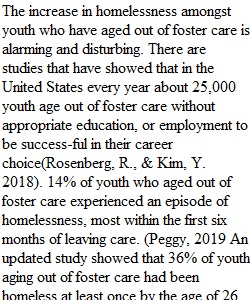


Q Policy Brief Part IV: Entire Brief including Title page, table of contents and executive sum-mary (May 6th by 11:59pm) 1. Title As the first part of the policy brief, the title should give readers an overview of the sub-ject and the problem being addressed. A compelling but short title (preferably no more than ten words) is critical because a reader may use the title in deciding whether to read the brief or not. 2. Table of Contents. The table of contents should provide an overview of the structure of the policy brief. It will show the brief’s structural organization, the main sections, and their sub-sections and page numbers to locate sections in the brief. 3. Executive Summary (I.5 page). The executive summary provides a synopsis of all main parts and findings of the brief. In this respect, the primary goal of the summary is to communicate to interested stake-holders (most especially decision-makers) who might not read the entire brief but have a vested interest in the key proposed policy recommendations. 4. Introduction (1.5 page) The introduction sets the stage by providing the context and focus of the policy brief. More specifically, it helps the reader to understand the who, what, and where your poli-cy strategy targets. The introduction must convincingly make the case that an urgent need exists and that your brief is worth reading because it offers possible solutions. Also included in the introduction is a brief overview of the sources of data used to inform the brief’s recommendations. 5. Problem Description (1.5 page) This section identifies, defines and elaborates in some detail the problem at hand. In doing so, the problem description offers background information about the history of the problem, its causes, who is affected, descriptions of previous policies efforts addressing the problem, and the outcomes of implementing those policies (positive and negative). 6 &7. Conclusions and Recommendations (1.5 pages) This section presents the case for your preferred alternative strategy to decision mak-ers. It does so by providing a concise synthesis of major findings. The brief will con-clude with the listing of at least three key policy recommendations critical to the success of the strategy. Policy Brief Assignment Grading Rubric Components Excellent Satisfactory Poor Points Executive Sum-mary ES provides the reader with the key points made, including key arguments. ES provides the reader with only some of the key points made, including key argu-ments. ES is essentially nothing more than an outline. 3 Introduction. Introduction clearly defines the context in which the policy rec-ommendations would be applied. The description of the context in which the policy recom-mendations would be applied is vague. Little description of context? in which the policy recommenda-tions would be applied. 3 Problem Descrip-tion Provides a full and rea-soned explanation of how the problem de-veloped in the specific context. Provides some explanation of how the problem developed in the specific context. Does not explain how the prob-lem developed, or makes only very general statements. 3 Conclusions and Recommendations The conclusion is thoughtfully and well presented with six key policy recommenda-tions critical to the suc-cess of the strategy. Recommendations are vague or incomplete The reasons for making the recommendations are difficult to understand and do not clearly rest on logic and evidence. Recommendations are ill defined and not specific to the context. 3 Style and Refer-ences Included at least 5 credible references, and adherence to APA 6th edition guidelines for in text and reference page citations. There are no errors in gram-mar, spelling or punc-tuation. Included at least 5 credible references, and adherence to APA 6th edition guidelines for in text and reference page cita-tions. There are a few errors in grammar, spelling or punctua-tion. Included fewer than 5 references that were not representative of the body of literature. Failure to adhere to APA 6th edition guidelines for in text and reference page citations. There are frequent errors in spelling, grammar, and punctua-tion. 3 Total
View Related Questions